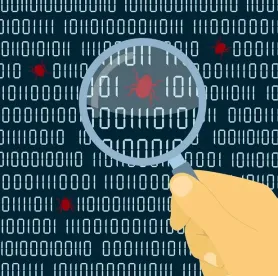Software escrow arrangements are gaining increasing importance in complex technology deals. Software escrows can be an effective way to mitigate certain future risks involving the licensing of commercial software, a SaaS service, or some other technology product. The application of escrow principles to technology deals comes with unique considerations for parties seeking such services. This article explores basic software escrow principles and best practices.
1. What is a Software Escrow?
In typical off the shelf purchases of software, only object code (i.e. executable code) is licensed out to the end user. [1] In commercial licensing deals, however, the licensee may have a legitimate interest in object code and source code. Accessing source code allows the licensee to see how the software is processing data or performing functions, and can even allow the licensee to change the operation of the software .[2] The licensor is usually hesitant to grant rights to source code, as it represents a key piece of intellectual property. To compromise, the parties may choose to enter a software escrow arrangement. The software escrow allows the licensor (“Depositor”) to deposit its source code, associated build/deployment documentation, and/or other proprietary technology as needed (the “Deposit Material”) with an escrow agent (“Agent”) for the benefit of the licensee (“Beneficiary”). In the event certain pre-defined conditions are met (each, a “Release Condition”), the Agent will release the Deposit Material to the Beneficiary. In this way, a licensee acquires the protection it is looking for without requiring the licensor to directly convey intellectual property rights.
2. When is a Software Escrow Needed?
Software escrow arrangements can be expensive and are not right for every deal.[3] As a result, it is important to make a fact-based determination as to whether a software escrow should be built into a particular contract. While every deal is different, there are several factors which a party may consider in determining whether a software escrow is needed. Some of these include[4]:
Whether the licensor is signaling:
- Financial instability;
- Declining business forecast;
- Discontinuation of software maintenance and support;
- Infrequency of software updates; or
- Risk of future breach of contract.
Whether the licensed software is:
- Critical to licensee’s business growth;
- Difficult to acquire through competitor products;
- Touching or affecting key stakeholders of licensee;
- Necessary for licensee’s business continuity preparation or operations; or
- Offered by an unestablished vendor.
After evaluating the above factors, if the parties believe the benefits of having the Deposit Material safely stored with a neutral third party outweigh the costs, then a software escrow may be a prudent measure.
3. How Does a Software Escrow Work?
In principle, a software escrow functions in the same way as any other escrow arrangement. After determining that a software escrow is desirable, the parties execute an escrow agreement with an Agent. Escrow agreements will vary depending on the Agent’s scope of engagement and suite of value-added verification services, but the core responsibilities of the parties should remain fairly consistent and are substantially as follows:
Depositor
- Makes initial deposit of Deposit Material.
- Agrees to release updates as necessary to Deposit Material during the term.
- Gives market representations and warranties regarding the Deposit Material.
Beneficiary
- Monitors compliance between the Depositor and Agent during the term.
- Requests additional verification services for Deposit Material as needed.
Agent
- Receives Deposit Material and confirms receipt to Beneficiary.
- Offers additional verification services upon request.
- Holds and controls Deposit Material until Release Conditions are met.
In addition to the above responsibilities, the following terms are unique to software escrow agreements and should be defined between the parties:
- Deposit Material Description. The Deposit Material should be adequately described in the escrow agreement and the actual Deposit Material should match the description. A market example of such a description is as follows: “the computer program expressed in a source code language consisting of a full source language statement of the program the software is comprised of and all related compiler command files, build scripts, complete maintenance documentation, application programming interfaces, graphical user interfaces, schematic diagrams and annotations which comprise the pre-coding detail design specification, and all other material necessary to allow a reasonably skilled programmer to maintain and enhance the software without the assistance of the licensor.”[5]
- Type of Escrow Arrangement. While a software escrow is most common, some Agents have the capacity to manage different types of escrow arrangements. Other types of escrow arrangements include: (1) technology escrows, holding items of physical technology such as encryption keys or prototypes, (2) SaaS escrows, involving the components necessary to ensure a SaaS product remains viable, such as code, virtual machines, data, and other key components of the SaaS service; (3) domain escrows, holding a website domain name.[6]
- Single Beneficiary vs. Multi-Beneficiary.[7] A single beneficiary agreement is a standard three-party agreement that designates the Beneficiary as the receiver of the Deposit Materials upon a Release Condition. A multi-beneficiary agreement involves multiple receivers of Deposit Materials. This type of agreement may be complex by separating the software escrow into projects or releases and designating certain Beneficiaries to receive different Deposit Materials based on the identity of the Beneficiary and/or which project or release the Beneficiary is logically tied to.
- Designation of Paying Party. Either the Depositor or the Beneficiary or some combination of both may be designated as the paying party. There are usually two key payments to be made: the setup fee and an annual fee. Some strategic considerations on where the cost should be placed may be found here, and a sample fee schedule of the costs associated with a software escrow may be found here. Expect additional verification services to substantially increase the cost of the escrow arrangement.
- Defined Release Conditions. These conditions will vary from deal to deal. Typically, they will revolve around, (i) the Depositor’s financial condition, triggering if, for example, the Depositor enters voluntary or involuntary bankruptcy, or (ii) the happening of a future event or condition, such as the Depositor failing to function as a going concern or operate in the ordinary course. Upon the occurrence of a Release Condition, the Depositor will be given a notice period to contest whether the Release Condition has actually occurred. If the Depositor fails to timely contest, the Agent will release the Deposit Material to the Beneficiary and will terminate the agreement.
- Verification Services. Agents typically offer services that verify the Deposit Material’s functionality, accessibility, or usability and such services are offered at varying degrees of thoroughness. Verification services range from basic file list tests analyzing readability and file listing/classification, to full comprehensive usability tests, which may involve the Agent setting up an environment, installing and configuring the Deposit Material, and then running functional tests as necessary to confirm the Deposit Material is in an executable condition. Extensive verification services typically require a separate executed statement of work between the parties.
4. Conclusion.
Utilizing a software escrow can be an effective means to ensuring business continuity in the event of a realized risk. Software escrow arrangements can be complex in nature and require careful structuring of release conditions, payment responsibilities, and other services as necessary. If you are contemplating a licensing agreement and are seeking further assurances of the future accessibility of the licensed product or service, consider a software escrow arrangement.
[1] Katheryn A. Andersen & Jen C. Salyers, Source Code Escrow, § 21:1 available at: http://www.bssdlaw.com/files/lbcs_source_code_escrow.pdf
[2] Source Code, Techopedia, available at https://www.techopedia.com/definition/547/source-code (last visited Apr. 4, 2018)
[3] EscrowTech, Software Escrow Fundamentals, When Should I Use a Software Escrow? EscrowTech, https://www.escrowtech.com/software-escrow.php#whatSoftwareEscrow (last visited Apr. 4, 2018)
[4] Id.
[5] Andersen & Salyers, supra note 1, at § 21:4.
[6] EscrowTech, Supra note 4, Software Escrow Fundamentals, Types of Escrows.
[7] Nccgroup, Software Escrow Agreements, Nccgroup, https://www.nccgroup.trust/us/our-services/software-escrow-and-verification/escrow-agreements/ (last visited Apr. 4, 2018)




 />i
/>i

